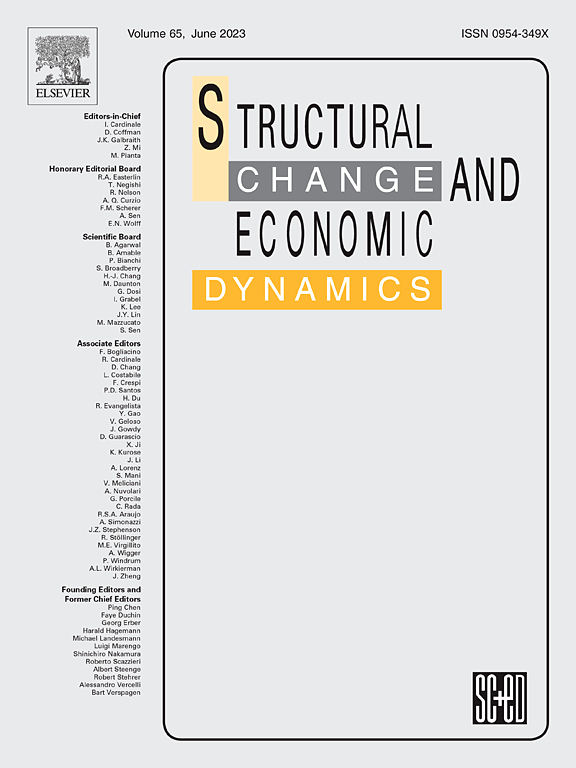拉丁美洲中产阶级的崛起与消费进口模式
IF 5.5
2区 经济学
Q1 ECONOMICS
引用次数: 0
摘要
本文研究了1996年至2019年期间15个拉丁美洲经济体的中产阶级与消费进口模式之间的关系,其中包括最近的大宗商品繁荣。中产阶级的消费模式可能不同于下层阶级的消费模式,在生产结构很少多样化的国家,例如拉丁美洲的国家,这种消费模式可以反映在进口上。在高度不平等的国家背景下,中产阶级不仅可能根据自己的喜好消费,还可能受到模仿和地位动机的驱动。我的研究结果表明,中产阶级已经成为推动总消费进口和按产品类型分类进口(包括奢侈品进口)的主要收入群体。估计的系数对于中下阶层和在商品繁荣时期尤其大,这一收入群体扩张最为迅速。这一发现表明,中产阶级作为消费进口及其构成的决定因素发挥着重要作用,这对该地区脆弱的国际收支动态产生了影响。本文章由计算机程序翻译,如有差异,请以英文原文为准。
The rise of the middle class and the pattern of consumption imports in Latin America
This paper examines the relationship between the middle class and the pattern of consumption imports in fifteen Latin American economies over the period 1996–2019, which includes the latest commodity boom. The consumption patterns of the middle class, which are likely to be different from those of lower classes, could be reflected in the imports in the case of countries with little diversified productive structures, such as those of Latin America. In the context of highly unequal countries, the middle class may not only consume according to its own preferences, but may also be driven by emulation and status motives. My results show that the middle class has become the main income group driving both aggregate consumption imports and imports disaggregated by product type, including luxury imports. The estimated coefficients are particularly large for the lower-middle class and during the period of the commodity boom, when this income group expanded most rapidly. This finding points to a significant role of the middle class as a determinant of consumption imports and their composition, with implications for the region’s fragile balance of payments dynamics.
求助全文
通过发布文献求助,成功后即可免费获取论文全文。
去求助
来源期刊

Structural Change and Economic Dynamics
ECONOMICS-
CiteScore
9.60
自引率
4.90%
发文量
159
期刊介绍:
Structural Change and Economic Dynamics publishes articles about theoretical, applied and methodological aspects of structural change in economic systems. The journal publishes work analysing dynamics and structural breaks in economic, technological, behavioural and institutional patterns.
 求助内容:
求助内容: 应助结果提醒方式:
应助结果提醒方式:


